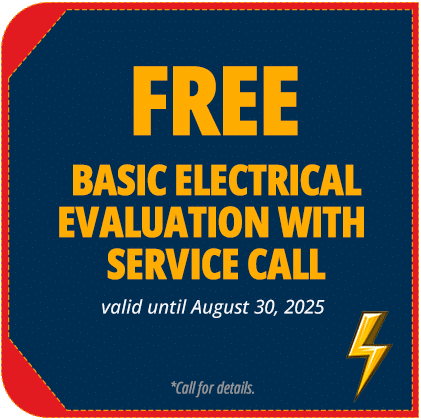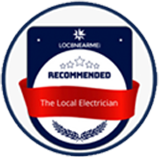Are you tired of unexpected power outages disrupting your daily life?
Full house generator systems can be the solution you need for an uninterrupted power supply. These systems are designed to provide reliable backup power to your entire home, ensuring that you and your family remain comfortable and safe during power outages.
In this article, we will explore the various aspects of full house generator systems, from their benefits to the installation process, and how they can enhance your home’s safety and value. Keep reading to discover why investing in a full house generator system is a smart choice for homeowners.

Overview of Full House Generator Systems
Power continuity is crucial for maintaining the comfort and functionality of your home. In today’s world, our dependence on electricity extends beyond mere convenience.
Essential systems like heating, cooling, refrigeration, and medical devices rely on a stable power supply. A full house generator system ensures that these critical functions remain operational during power outages, preventing disruptions that can lead to discomfort or even danger.
Benefits of Installing Full House Generator Systems
Ensuring Uninterrupted Power Supply
A full house generator kicks in automatically during a power outage, providing a seamless transition and continuous power. This means no more worrying about spoiled food, interrupted work, or loss of communication.
Enhancing Home Safety and Security
Power outages can compromise home security systems, leaving your property vulnerable. A generator keeps security systems, lights, and cameras operational, ensuring your home remains protected at all times.
Increasing Property Value
Investing in a full house generator system can increase your home’s value. Potential buyers often see backup power capabilities as a significant advantage, making your property more attractive in the market.
How Full House Generator Systems Work
Basic Components of a Generator System
A full house generator system consists of several key components: the generator itself, an automatic transfer switch (ATS), and a fuel supply. These parts work together to provide continuous power during an outage.
Automatic Transfer Switches Explained
The ATS detects power loss and automatically switches the power source from the grid to the generator. Once grid power is restored, it switches back, ensuring minimal disruption to your household.
Fuel Types and Their Advantages
Full house generators can run on various fuel types, including natural gas, propane, and diesel. Natural gas is convenient for homes with an existing gas line, while propane and diesel can be stored on-site, offering flexibility depending on your needs and availability.
How to Choose the Right Full House Generator System
Assessing Power Needs
Before selecting a full house generator system, it’s essential to evaluate your home’s power requirements.
Consider the wattage of all essential appliances and systems, such as HVAC units, refrigerators, and medical equipment.
A professional assessment can help you determine the appropriate generator size, ensuring it can handle your home’s total power load without overloading or underperforming.
Comparing Different Models and Brands
There are numerous generator models and brands available, each offering various features and capabilities. Some of the top brands include Generac, Kohler, and Cummins.
When comparing models, consider factors such as power output, fuel efficiency, noise levels, and warranty options. Reading customer reviews and expert ratings can also provide valuable insights into the reliability and performance of different systems.
Key Features to Look For
Automatic Transfer Switch (ATS)
An ATS is a crucial feature for full house generator systems, providing a seamless transition between the power grid and the generator during an outage.
Remote Monitoring
Some modern generators come with remote monitoring capabilities, allowing you to check the system’s status and receive alerts on your smartphone or computer. This feature adds convenience and peace of mind, especially when you’re away from home.
Fuel Type Compatibility
Ensure that the generator you choose is compatible with your preferred fuel type. Some models can switch between natural gas and propane, offering flexibility and ease of use.
Noise Level
Generators can be noisy, so look for models with lower decibel ratings or sound-dampening features to minimize disruption.
Maintenance Features
Consider generators with self-diagnostic capabilities and maintenance reminders. These features help ensure that your generator remains in optimal condition with minimal effort.
Full House Generator Systems in Spring Valley Village
Local Installation Services
Spring Valley Village has several reputable providers specializing in the installation of full house generator systems. Local companies offer tailored services, ensuring that your generator system is installed according to regional codes and standards. They also provide maintenance and repair services to keep your generator running smoothly.
Community Experiences and Testimonials
Residents of Spring Valley Village have reported high satisfaction with their full house generator systems. Many homeowners highlight the peace of mind these systems provide, particularly during severe weather events.
Full House Generator Systems in Houston
Navigating City Regulations
Installing a full house generator in Houston involves adhering to specific city regulations and permitting requirements. It’s crucial to consult with a licensed installer who is familiar with local codes to ensure your system is compliant.
Permits typically cover aspects like generator placement, noise levels, and fuel storage. Proper installation not only ensures safety but also prevents potential fines and legal issues.
Full House Generator Systems in Katy
Preferred Providers and Installers
In Katy, several preferred providers offer comprehensive services for full house generator systems. These providers are known for their expertise, customer service, and quality of work.
They handle everything from the initial consultation and assessment to installation and ongoing maintenance. Choosing a reputable installer ensures that your generator system is set up correctly and functions efficiently.
Local Incentives and Rebates
Katy residents may be eligible for local incentives and rebates when installing full house generator systems. These financial incentives can significantly reduce the upfront costs, making it more affordable to invest in a reliable power solution. Check with local utility companies and government programs for available rebates and incentives.
Cost Considerations for Full House Generator Systems
Initial Investment and Installation Costs
The initial cost of a full house generator system includes the price of the generator, installation fees, and any necessary permits.
On average, a full house generator can range from $5,000 to $15,000, depending on the size and features. Installation costs can vary based on the complexity of the setup and local labor rates.
Long-term Maintenance Expenses
Maintenance is crucial to ensure your generator system remains operational. Regular maintenance tasks include oil changes, filter replacements, and system checks.
Many providers offer maintenance plans that cover these tasks, typically costing a few hundred dollars per year. Investing in regular maintenance can extend the lifespan of your generator and prevent costly repairs.
Cost-saving Tips and Financing Options
To make the investment more manageable, consider these cost-saving tips and financing options:
- Shop around: Compare quotes from multiple providers to get the best deal.
- Look for discounts: Some providers offer discounts for first-time customers or referrals.
- Financing plans: Many companies offer financing options, allowing you to spread the cost over several months or years.
- Energy-efficient models: Choose energy-efficient generators that consume less fuel and reduce operational costs.
Installation Process of Full House Generator Systems
Step-by-step Guide to Installation
Assessment and Planning
The installation process begins with a thorough assessment of your home’s power needs. A professional will evaluate your electrical system, determine the best location for the generator, and plan the installation to comply with local codes and regulations.
Obtaining Permits
Necessary permits must be acquired from local authorities. This step ensures that the installation meets all safety and regulatory standards.
Site Preparation
The chosen location for the generator is prepared, which may involve creating a concrete pad or other foundation to support the unit. This ensures stability and minimizes vibration.
Installing the Generator
The generator unit is delivered and securely mounted in the prepared location. Proper positioning is crucial for optimal performance and accessibility for maintenance.
Connecting Fuel Lines
The generator is connected to the fuel supply, whether it’s natural gas, propane, or diesel. This step requires precision to prevent leaks and ensure a steady fuel supply.
Electrical Connections
The generator is wired to your home’s electrical system, typically via an automatic transfer switch (ATS). This connection allows the generator to automatically take over when the main power supply fails.
Testing and Calibration
After installation, the system is thoroughly tested to ensure it operates correctly. The generator and ATS are calibrated to handle the home’s power load efficiently.
Final Inspection
A final inspection by local authorities ensures the installation complies with all regulations. This step is crucial for safety and legal compliance.
Common Installation Challenges
Installing a full house generator can present several challenges, including:
- Space Constraints: Finding an appropriate location for the generator that meets safety and accessibility requirements.
- Noise Concerns: Generators can be noisy, so placement must consider the impact on household members and neighbors.
- Fuel Supply Issues: Ensuring a reliable and safe connection to the fuel source.
- Permitting Delays: Navigating the bureaucratic process for obtaining necessary permits can be time-consuming.
Professional vs. DIY Installation
While some homeowners may consider a DIY installation to save money, it’s generally recommended to hire a professional.
Professional installers have the expertise to handle complex electrical and fuel connections, ensuring safety and compliance with local regulations. A professional installation also typically comes with a warranty, providing peace of mind and protection against future issues.
Maintenance and Upkeep of Full House Generator Systems
Routine Maintenance Tasks
To keep your full house generator in optimal condition, regular maintenance is essential. Key tasks include:
- Oil Changes: Replace the oil and oil filter regularly to ensure the engine runs smoothly.
- Battery Checks: Ensure the battery is charged and in good condition to start the generator when needed.
- Air Filter Replacements: Change the air filter to maintain proper airflow and engine efficiency.
- Fuel System Inspections: Check for leaks and ensure the fuel supply is clean and sufficient.
- Exercise Runs: Periodically run the generator to keep the engine parts lubricated and identify any issues early.
Troubleshooting Common Issues
Despite regular maintenance, issues may still arise. Common problems include:
- Starting Failures: Often caused by battery issues or fuel supply problems.
- Poor Performance: This may result from dirty filters or worn-out parts.
- Fuel Leaks: Require immediate attention to prevent safety hazards.
- Overheating: This can be due to insufficient coolant or airflow obstructions.
Scheduling Professional Inspections
Annual professional inspections are recommended to thoroughly check the system and perform any necessary repairs. Professionals have the tools and expertise to identify and address potential issues before they become major problems.
Upgrading and Replacing Old Generator Systems
Signs It’s Time for an Upgrade
Several signs indicate it may be time to upgrade or replace your generator system:
- Frequent Breakdowns: Constant repairs can be a sign that the system is wearing out.
- Increased Energy Demands: If your household’s power needs have grown, your current generator may no longer be adequate.
- Age of the System: Generators typically last 10-15 years; beyond this, performance may decline.
- Lack of Modern Features: Newer systems offer features like remote monitoring and improved fuel efficiency.
Benefits of Modern Systems
Upgrading to a modern generator system offers several benefits, including:
- Improved Reliability: Newer systems are less prone to breakdowns.
- Enhanced Efficiency: Modern generators consume less fuel and produce more power.
- Advanced Features: Remote monitoring, quieter operation, and better safety features.
How to Choose a Replacement Generator
When choosing a replacement generator, consider:
- Power Capacity: Ensure the new system can meet your home’s power needs.
- Fuel Type: Choose a fuel type that is readily available and cost-effective.
- Brand Reputation: Opt for reputable brands known for reliability and customer support.
- Warranty: A good warranty can provide peace of mind and protection against future issues.
Safety Tips for Operating Full House Generator Systems
Safe Operating Practices
Operating a full house generator system safely is paramount to prevent accidents and ensure the system functions correctly. Here are some essential safety practices:
- Proper Installation: Ensure your generator is installed by a professional who adheres to local codes and standards.
- Ventilation: Generators emit carbon monoxide (CO), a deadly gas. Place your generator in a well-ventilated area, away from windows, doors, and vents to prevent CO buildup.
- Regular Maintenance: Follow the manufacturer’s maintenance schedule to keep the generator in top condition and prevent malfunctions.
- Dry Conditions: Operate the generator in dry conditions to avoid electrical shocks. If necessary, create a canopy to protect it from rain.
- Fuel Storage: Store fuel in approved containers, away from living areas. Ensure fuel is fresh and not contaminated.
Emergency Preparedness
Being prepared for emergencies involves knowing how to operate your generator safely and effectively during a power outage:
- Read the Manual: Familiarize yourself with the owner’s manual and follow the manufacturer’s instructions.
- Emergency Kit: Keep an emergency kit that includes flashlights, batteries, first-aid supplies, and non-perishable food.
- Test Runs: Regularly perform test runs to ensure the generator starts and operates smoothly.
- Backup Plan: Have a backup plan in case your generator fails, such as an alternative power source or a place to stay.
Handling Fuel and Electrical Components
Handling fuel and electrical components requires caution to prevent fires, explosions, and electrical hazards:
- Turn Off the Generator: Always turn off the generator and let it cool before refueling to prevent fires.
- No Smoking: Do not smoke or allow open flames near the generator or fuel storage.
- Proper Connections: Ensure all electrical connections are secure and dry to prevent shorts and electrical shocks.
- Grounding: Properly ground your generator to prevent electrical hazards.
Environmental Impact of Full House Generator Systems
Eco-friendly Generator Options
While traditional generators can have a significant environmental impact, eco-friendly options are available:
- Inverter Generators: These are more fuel-efficient and produce fewer emissions compared to conventional generators.
- Solar Generators: Powered by solar panels, these generators offer a renewable and clean energy source.
- Bi-fuel Generators: These systems can run on a combination of natural gas and propane, reducing reliance on fossil fuels.
How to Reduce Carbon Footprint
To minimize your generator’s carbon footprint, consider the following:
- Efficient Usage: Only run the generator when necessary and at optimal load to maximize efficiency.
- Regular Maintenance: Keep the generator well-maintained to ensure it runs efficiently and emits fewer pollutants.
- Upgrade to Modern Systems: Newer generators are designed to be more efficient and environmentally friendly.
Future Trends in Sustainable Power Solutions
The future of generator systems is leaning towards sustainability and innovation:
- Hybrid Systems: Combining traditional generators with renewable energy sources like solar and wind power.
- Smart Generators: Equipped with advanced monitoring and control systems for efficient energy management.
- Battery Storage: Integrating battery storage systems to store excess power generated from renewable sources for use during outages.

Frequently Asked Questions (FAQ)
-
What is a full house generator system?
A full house generator system provides backup power to an entire home during a power outage, ensuring continuous operation of essential appliances and systems.
-
How does an automatic transfer switch (ATS) work?
An ATS detects power loss and automatically switches the power source from the grid to the generator, and back when grid power is restored, ensuring a seamless transition.
-
What fuel types are available for generators?
Generators can run on natural gas, propane, or diesel. Each fuel type has its advantages, such as availability, storage, and cost.
-
How often should I perform maintenance on my generator?
Regular maintenance, such as oil changes and battery checks, should be performed according to the manufacturer’s recommendations, typically every six months to a year.
-
Can I install a full house generator system myself?
While some may consider DIY installation, it is recommended to hire a professional to ensure the system is installed safely and complies with local regulations.
Investing in a full house generator system ensures power continuity and enhances your home’s safety and value.






























